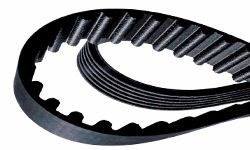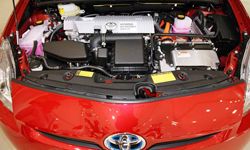Under the hood of most cars you'll find one or more pulley-driven belts. Called engine belts (or, if there's only one of them, a serpentine belt), these belts take kinetic energy from the engine and use it to generate the electricity that runs the car's electrically powered accessories. These include the alternator, the air conditioner, the power steering and the water pump. If one of these belts should break, the car becomes very nearly undriveable.
It's possible, though, that there isn't a belt under the hood of your car, especially if you own a 2010-or-later Toyota Prius. The Prius uses electric motors to power the car's electrically powered systems and these motors operate quite independently of the engine. Chances are that there'll be more cars using such a beltless engine system in the future. In fact, beltless engines have quite a few advantages over the older kind.
Advertisement
What are these advantages? We'll look at five of them over the next few pages.


